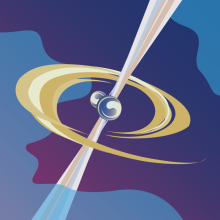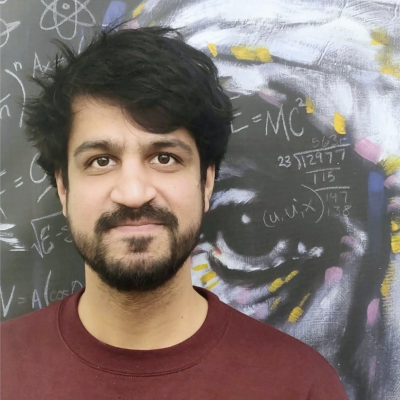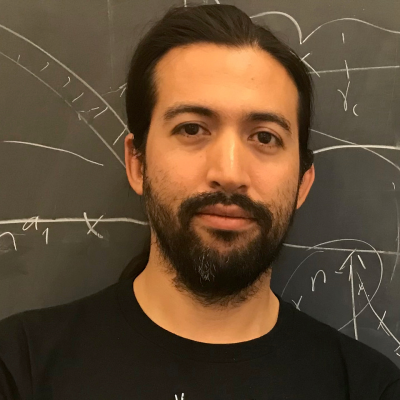
Advancing Computational Methods to Understand the Dynamics of Ejection, Accretion, Winds and Jets in Neutron Star Mergers
The recent observations of a binary neutron star merger using both gravitational wave interferometers as well as electromagnetic telescopes across the full spectrum have initiated the age of multimessenger astronomy and astrophysics. Our proposed network, comprising experts in the fields of theoretical and computational astrophysics, is poised to complement these observational successes with the most thorough and complete effort in the field to simulate binary neutron star coalescences from prior to merger through to the formation of disks and/or collapse of the merged remnant, the production of jets, and launching of outflows.
Bringing together more than 15 researchers spread across four network nodes (RIT, Johns Hopkins, Goddard Space Flight Center, and West Virginia University), our work will yield highly accurate predictions of gravitational-wave signatures, multi-wavelength electromagnetic and neutrino emission, and nuclear processing. This work is critical for linking the wealth of observational data we expect about binary mergers containing neutron stars in the very near future to the physical processes governing these mergers.
For this work, we will leverage our individual and collective expertise with several codes that stand at the cutting-edge within their fields: IllinoisGRMHD, a three-dimensional numerical relativistic magnetohydrodynamics (MHD) code proven to be able to generate magnetized jets in binary mergers; Harm3D, a highly scalable general-relativistic MHD code capable of using flexible coordinate systems and arbitrary spacetimes to simulate remnants and disks with unprecedented precision; Patchwork, a brand-new multipatch infrastructure permitting efficient and accurate simulation of fluid systems heterogeneous in terms of local physics, symmetries, length scales, and preferred reference frames; Pandurata, a neutrino transport code that can couple to MHD simulations in fully dynamical spacetimes; and Lorene, the leading code for generating relativistic initial data for binaries containing neutron stars. By coupling these codes together, we will be able to evolve binary merger simulations for longer times, at higher accuracies, with more accurate physical predictions, than any single code could accomplish on its own.
Our network will simulate several different physical models whose properties are critical to understanding in order to interpret future multimessenger observations. These include binaries whose merger leads to a prompt collapse of the remnant to a black hole, those for which the collapse occurs after a delay, and those for which we expect the merger remnant to persist indefinitely. In each case, we will calculate detailed electromagnetic and neutrino fluxes as well as characterizing the evolution of the magnetic fields, including the launching of jets and other outflows from the nascent remnant. We will also simulate black hole-neutron star mergers, allowing us to disentangle the two leading sources of multimessenger transients based on their observed properties. We will also perform “event-based'' simulations, using parameters informed by specific LIGO/Virgo detections, and thereby permitting much closer comparison with observables. This work is clearly relevant to NASA missions like Fermi, Swift, Chandra, Hubble, and Spitzer, and to JWST once it comes online. It directly addresses Strategic Plan Objective 1.6: “Discover how the universe works, explore how it began and evolved, and search for life on planets around other stars" and to the core theme of NASA's Physics of the Cosmos program, whose goal is to “Probe the origin and destiny of our universe, including the nature of black holes, dark energy, dark matter and gravity''.
Early Science Allocation on TACC's Frontera [Youtube]
Binary Neutron Star Merger Feb 25 version: Black Dot = Black Hole [Youtube]
IllinoisGRMHD BNS simulation; hybrid EOS with initially cold piecewise-polytrope SLy EOS [Youtube]
TEAM MEMBERS:
Senior Personnel
- TCAN: Manuela Campanelli (PI, RIT); Julian Krolik (co-I/JHU Site PI), Jeremy Schnittman (co-I/NASA-JSFC Site PI), Zachariah Etienne (co-I/U. of Idaho Site PI); Joshua Faber (co-I RIT), John Baker (co-I NASA-GSFC), Bernard Kelly (co-I NASA-GSFC), Scott Noble (co-I NASA-GSFC), Jason Nordhaus (co-I RIT), Richard O'Shaughnessy (co-I RIT), Yosef Zlochower (co-I RIT);
- Collaborators: Sebastiano Bernuzzi (Collaborator U. Iena Germany), Riccardo Ciolfi (INFN Padova Italy), Bruno Giacomazzo (Collaborator Milano-Bicocca (UniMiB)), Tsvi Piran (Collaborator HUJI Israel), Enrico Ramirez-Ruiz (Collaborator UCSC), Luke Roberts (Collaborators MSU), Carlos Lousto (RIT).
Postdocs:
- TCAN: Geoffrey Ryan (UMD), Leo Werneck (U. of Idaho), Yossef Zenati (JHU)
- Collaborators: Mark Avara (RIT), Vassilios Mewes (ORNL), Federico Lopez Armengol (IAR).
Students:
- TCAN: Tim Moon (RIT), Ariadna Murguia-Berthier (collab UCSC), Thiago Assumpção (UWV)
- Collaborators: Grace Fiacco (RIT), Trung Ha (RIT), Michael Kolacki (RIT).
Slack:
- tcan-bns-enchilada.slack.com
- tcan-rit-nasa-jhu-wvu.slack.com












